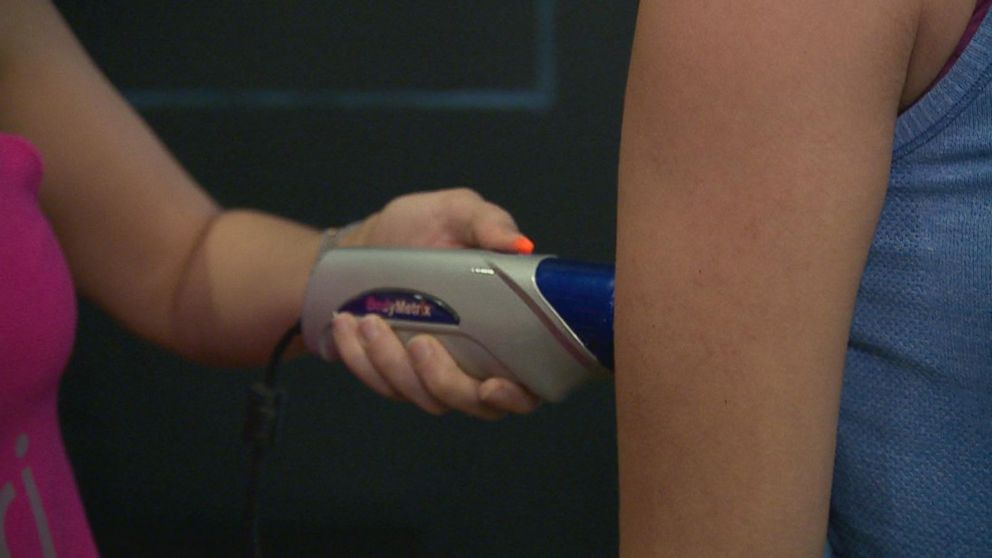How a Sonogram Is Helping Gym Goers Lose Weight
Diem Tran has lost 12 pounds and 7 percent body fat since August.
— -- Sonograms are the latest piece of technology gyms are using to help inspire their members to tone up and lose weight. But rather than scoping a growing baby in utero, the hand-held ultrasound scanners evaluate body fat percentage.
Bari Studio in New York City uses this technique to give their members insight into their progress.
“It takes measurements from four different parts of their body -- the triceps, waist, hip and thigh -- so we can see what’s going on in these specific areas and get information about their total body composition,” explained Courtney Romano, a certified personal trainer who is Bari’s head trainer in New York.
The machine works by bouncing sound off the body’s various tissues to estimate fat thickness without using any radiation. Since sound rebounds off fat at a particular wavelength, the operator can use this information to calculate an overall body fat percentage.
Each measurement costs $50, Romano said, and the typical gym member repeats the measurement about once a month to help fine tune her training program. Clients like Diem Tran said the checkup provides a different perspective on her training.
“When I first started working out my weight stayed the same and I couldn’t figure out what was actually going on,” Tran told ABC News' "Good Morning America."
The 26-year-old credits the regular feedback she gets from the measurement for helping her lose 12 pounds and 7 percent body fat since August.

But proceed with caution, urged Dr. Jennifer Ashton, ABC News' senior medical contributor.
“Anytime we have technology to improve our health, that can potentially be an exciting thing,” Ashton said. “But my concern is that this not be misused or abused.”
The accuracy of sonogram body fat measurements is well established, Ashton said, but results can vary depending on the skill of the technician, the quality of the machine and how often the scan is repeated.
Despite the caveats, Ashton said she feels the measurement may help some exercisers reach their goals.
“Haters shouldn’t hate on this technology. At the end of the day, it’s whatever motivates the individual,” she said.




